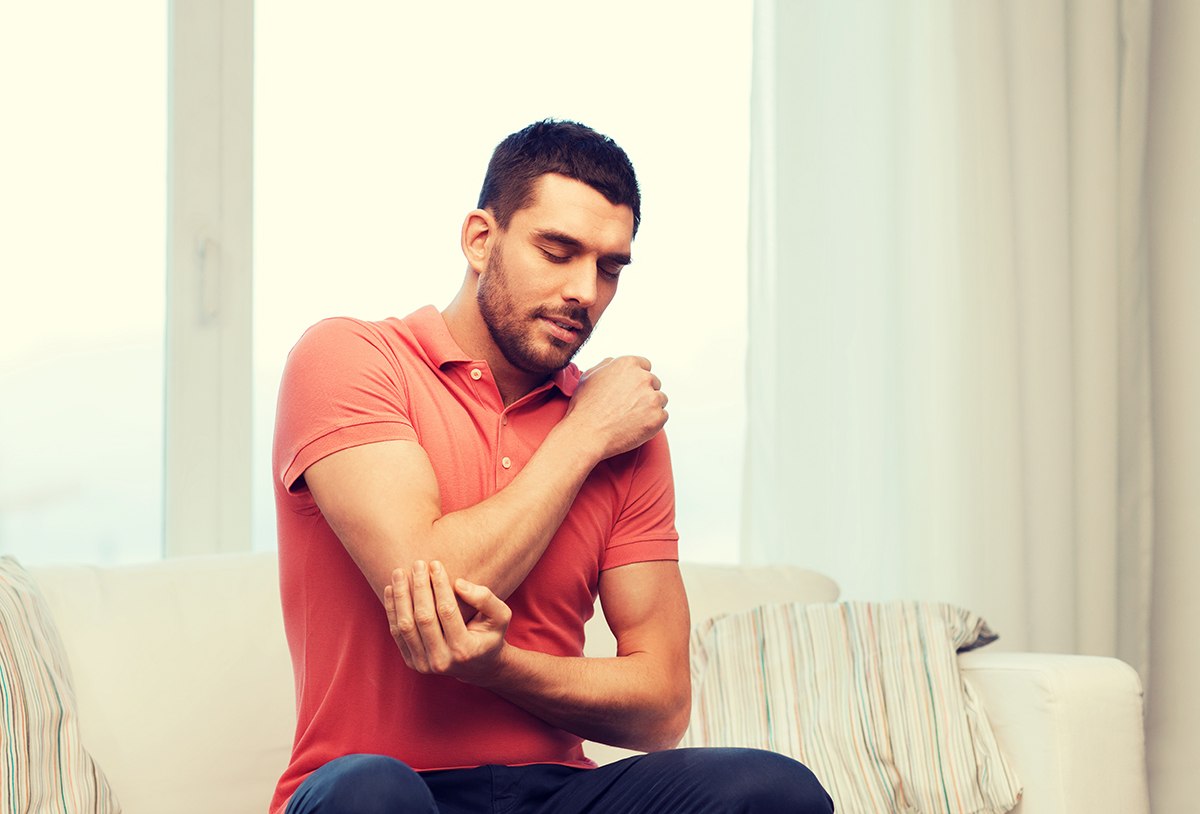It’s an unfortunate irony that massage therapy provides pain relief to others and yet, because of the repetitive nature of the work, many massage therapists suffer injuries and strains themselves during the course of their career.
Here we look at the most common injuries to affect massage therapists, and how to avoid them as a through correct techniques, preparatory exercises and simple lifestyle precautions.
What are the common injuries for a massage therapist?
There are several injuries which occur more frequently than most in the massage therapy industry.
These are:
- Inflammation of the tendons – repetitive stress can irritate and inflame your tendons.Symptoms include pain, tenderness, swelling and difficulty moving the affected joint.
- Saddle joint of the thumb injury – overuse of the saddle joint in your thumb, which allows for back and forth and side to side motion of the thumb. This can lead to pain and discomfort.
- Carpal Tunnel Syndrome (CTS) – compression of the median nerve at the wrist can cause pain, numbness and a burning, tingling or itching sensation in the hand.
- Tendinosis – repetitive and extensive overload in the tendons of your wrist can cause pain.
- Trigger thumb or trigger finger – irritation of the tendon sheath from overuse causes pain, inflammation and stiffness in the thumb or finger.
- Nerve impingement injuries – overuse of tendons or muscles causes irritation, pinching or compression of nerve plexuses and their roots by surrounding structures.
How to avoid these injuries
There are three important ways you can help to minimise your chances of being injured as a massage therapist.
1. Correct massage techniques
To maximise your safety and comfort, pay attention to these tips regarding your body mechanics while working;
- Work at the correct table height – a massage table that is too low can cause you to bend over more than you should, moving your centre of gravity forward and putting pressure on your lower back. Correct table height should be roughly half your height, or slightly higher if you have longer legs. As a general rule, set the table slightly lower if applying pressure with thumbs, knuckles or fists, or when working on higher areas of the body, such as glutes and thoracic back.
- Use the correct strokes – and when repetitive strokes are required try to keep your wrist, hand and fingers relaxed. As a rule, your upper arm should never be more than 45 degrees away from your body, so step forward if you need to make longer strokes, rather than reaching out further.
- Keep your back straight – always use your knees rather than bending at the waist and, as the massage progresses, keep repositioning your body rather than staying in the one position.
- Use the weight of your body – when manipulating a muscle, and use your body weight behind each stroke, rather than pushing only from your shoulder or hand.
- Use your thumbs sparingly – trigger thumb is a common injury for massage therapists, caused by using the thumbs repeatedly to apply pressure. However if you use your body correctly you will minimise any risk.
Warm up and strength training exercises
The risk of injury to massage therapists has been well documented, and there are now a number of recommended exercises for practitioners that focus on those areas of the body most prone to injury.
These include warm up and stretching exercises for the hands and wrists, which are the tools of a massage therapist’s trade and the body parts most in the firing line. Warming up and stretching before beginning a massage session loosens muscles, tendons and ligaments and gets fluids flowing in the joints.
There are also strength training exercises for every part of the body including fingers, hands, wrists, arms, neck, shoulders and back. Exposing these areas to regular low impact exercises not only strengthens them, but makes them more resistant to injury from repetitive use.
Simple preventative measures
Day-to-day precautions you can also take to reduce your chances of being injured include:
- Only take on as much work as you can handle – in other words, calculate how many sessions you can safely and comfortably perform in a day and don’t exceed this amount.
- Take plenty of breaks during the day – decided on an appropriate break time between each client, and use the time to rehydrate and relax.
- Try using hand held tools where practical – consider the use of effort-saving tools such as an adjustable massage table and tools such as finger splints that can take the pressure off your body, while still providing the necessary treatment.
- Practise self-care – get plenty of sleep, eat a healthy diet, stay well hydrated, and make sure your own massage therapy needs are being attended to.
Massage therapy can be highly satisfying work, but it can also be physically demanding. By using best practice massage techniques, exercising regularly and not overtaxing your body, you are more likely to avoid injury and enjoy a long and rewarding career.
If you have an interest in massage and have found yourself wanting to try it as a new career, make sure you have the correct technique first by enrolling in a Discover Massage Australia course? We have a range of courses designed for beginners that will teach you the correct techniques, as well as how to reduce the risk of repetitive strain injury.
Sign up for a Discover Massage Australia course here.

